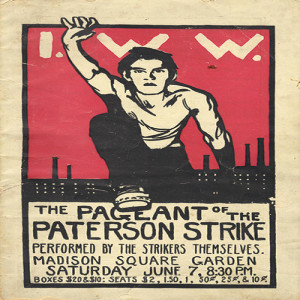

On this day in labor history, the year was 1913.
That was the day some 24,000 workers in Paterson, New Jersey walked out of 300 silk mills and dye houses to demand the eight hour day, better working conditions and a return to the two loom system.
Mill owners attempted to introduce a reduction of the workforce by doubling the number of looms workers ran, from two to four.
Descendants of strikers recalled a 55 hour workweek and children as young as nine working in the mills.
The strike started in late January at Doherty Mills and soon spread to become a general strike.
Leaders from the Industrial Workers of the World like Big Bill Haywood, Elizabeth Gurley Flynn and Carlo Tresca organized rallies, strike support and food pantries for the silk workers.
The police routinely attacked picket lines and as many as 1,850 workers were arrested during the course of the strike.
Socialists like John Reed put on a play at New York City’s Madison Square Garden that reenacted the strike to raise relief funds.
35,000 turned out to hear Upton Sinclair address the strikers.
Having stockpiled surplus product, manufacturers were able to outlast workers, who by July, were practically starving.
A main cause of the strike’s failure was the introduction of labor saving technology that served to reduce the need for highly skilled workers and drive down wages.
The strike may have failed in many of its demands but silk workers were able to beat back implementation of the four-loom system for almost a decade.
They would finally win the eight-hour day in 1919.
Importantly, the strike succeeded in uniting male and female workers across national and craft lines.
More Episodes
All Episodes>>You may also like
Create Your Podcast In Minutes
- Full-featured podcast site
- Unlimited storage and bandwidth
- Comprehensive podcast stats
- Distribute to Apple Podcasts, Spotify, and more
- Make money with your podcast











